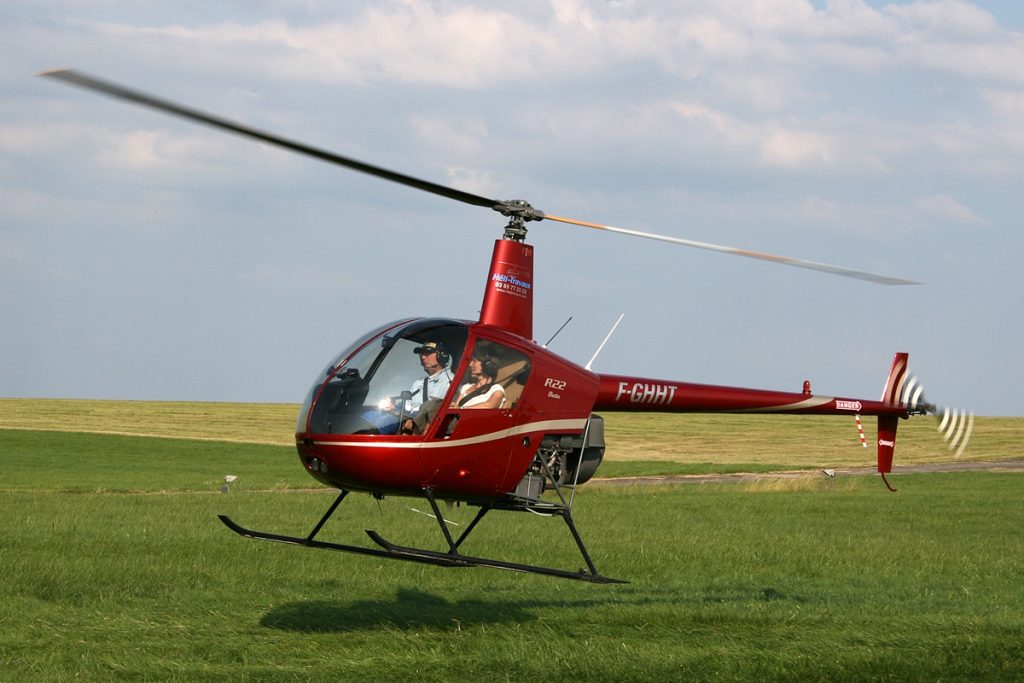Teaching students to fly any type of aircraft is probably as much about people skills as it is about flying. You have to relate to all types of individual and must often adapt your teaching style to their aptitude, previous life experience, attitude to flying, and so on. Perhaps this applies particularly to helicopter flying, which can be very difficult for many students, at least in the beginning. I’m sure all rotary instructors have encountered the student who thinks that he or she will never master hovering, who starts to despair, who begins to consider giving up. I can’t be the only instructor who has sat down over coffee with such students, explaining that it is indeed difficult, that almost everybody finds this, that practice makes perfect and worrying and becoming tense will only make it harder. Indeed, I sometimes feel as though I’m more of a social worker than a pilot. In my previous life I worked a lot with people, and that experience has been very useful. I don’t envy instructors who have to cope without such a background.

Of course, some students struggle more than others, and some of them are particularly memorable for this reason. Jenny was just such a student. She came to me when I was a fairly new instructor, just a couple of years after I had started out, so I had some teaching experience, but not a huge amount. Like most people, Jenny had a trial lesson, then said that she wanted to do the full course, possibly with a view to ‘going commercial’. And she particularly wanted me to teach her for the whole PPL(H) course as she felt that she’d do better with a female instructor.
Of course, I agreed. She planned to fly weekly, doing a couple of sessions at a time, as many students do. So we started the next week with the syllabus proper, with me teaching Jenny the effects of controls, then speed and power changes. She proved a reasonably adept pupil, though nothing special, and was obviously enjoying the flying. There seemed to be no problems.
The following week we had low cloud, which meant upper air work was out, so even though it was a bit early on, I began to teach Jenny how to hover. This is a fairly normal thing to do; although hovering is officially Exercise 8 and comes after much of the upper air work, it stands alone in many ways, and tends to be taught at short intervals, sometimes at the end of another exercise. But it is also a good thing to do on days when you really can’t go flying, as you are never more than a few feet off the ground.
Many students struggle with hovering, if not most of them, and Jenny was no exception. At first she accepted the fact that the helicopter was getting out of control most of the time, and seemed to see it as fun and a challenge. But the bad weather continued all that day, and she began to get a bit despondent. I hoped we would be able to continue with the less difficult upper air work the following week, to give Jenny some encouragement. But the poor weather continued. I suggested postponing her lessons, but Jenny was adamant that she didn’t want to do that. So she carried on learning to hover, and gradually she mastered it. By the next weekend, with the weather still horrible, we were on to take-offs and landings, which follow on directly from hovering. Then came hovering sideways and backwards, and I felt that Jenny was well on her way. I had spent a great deal of time talking to her, encouraging her, persuading her to relax, and so on. Indeed, this was one case in which I felt as though I was being as much of a friend and social worker as an instructor, and since by now she was frequently spending whole weekends at the flying school, we were spending a lot of time together.
The following weekend we finally managed to get into the air again, so Jenny could learn to fly straight and level, and do climbing, descending, and turns. Next came transitions – going from the hover to forward flight, again quite a difficult exercise. Before long she began to do circuits and I started to wonder if she would soon be ready for First Solo. I was still a restricted instructor at this point, so I asked the Chief Flying Instructor to fly with her, to make sure she was good enough. He recommended that she practice her take-offs and landings just a little more, and also work on nailing the correct altitude and speed in the circuit. It was no big deal; indeed, the same thing had happened to me at exactly that point in my training. Perhaps we restricted FIs are a little impatient when it comes to sending our students solo.
However, when I told Jenny all this, she was incredibly despondent. In fact, she completely over-reacted to the news that she needed more practice, and began to doubt her ability to do the course at all. I assured her this was absolutely not the case; she was fine, it would just take her a bit longer. But I think she began to doubt me at this point. She was also worried about the expense as I discovered the following week. For it was then that she broke the news to me that she wanted to carry on flying with the CFI rather than with me. “I really can’t afford this”, she said. “I hoped to do it all in 45 hours. And maybe I’ll do better with him”.
I assured her there was no problem, and there wasn’t, from my point of view. But I thought there might be from hers. The CFI was a fantastic pilot, much better than I was, but not that much of a people person. I couldn’t see him being all that good in helping Jenny fight her own demons if she continued having a hard time during the course. Still, I hoped I was mistaken.
For a while, all seemed to go well. Jenny went solo soon afterwards, as was likely to be the case whoever taught her. Then she began flying solo circuits – and that was where things began to go awry. I never found out exactly what happened as I heard about it second-hand. But it seemed that Jenny messed up a landing, very sensibly did a go-around, but then….for some reason she just couldn’t get the helicopter on the ground. I suspect that she panicked and forgot the sequence of manoeuvres to transition to the hover, which isn’t too hard to do when you’re very new to helicopter flying. Maybe it would have helped if someone had talked to her on the radio, persuaded her to get up in the air and fly around until she calmed down, then talked her through a transition and landing. Perhaps they did that in the end, I wasn’t there that day and I never found out the details. But I did find out what happened afterwards. A very scared Jenny was told to go flying again as soon as possible, to get over it. No sympathy, no long talks, none of the things I would have done and which had seemed so useful in her earlier flying. Perhaps this would have worked for some students – the get-back-on-the-horse-after-falling-off cure. But it clearly didn’t work for Jenny, because after that day we never saw her again.
I wondered for ages if I should give Jenny a call and see how she was, maybe even persuade her to go flying again. It didn’t seem like my place to do so, and I was afraid of intruding and making things worse. Perhaps I was right, or maybe I was wrong. We didn’t have email back then, which might have been a less intrusive way of contacting her. So I did nothing. Some time afterwards, I heard that she went to another flying school and continued the course. I hoped it was true, and I wished her well. Perhaps she is a commercial helicopter pilot by now, as she so wanted. Maybe everything worked out for the best. But this incident absolutely convinced me, if I needed convincing, that people skills are fantastically important when it comes to helicopter instructing – perhaps more so than any other skill.







